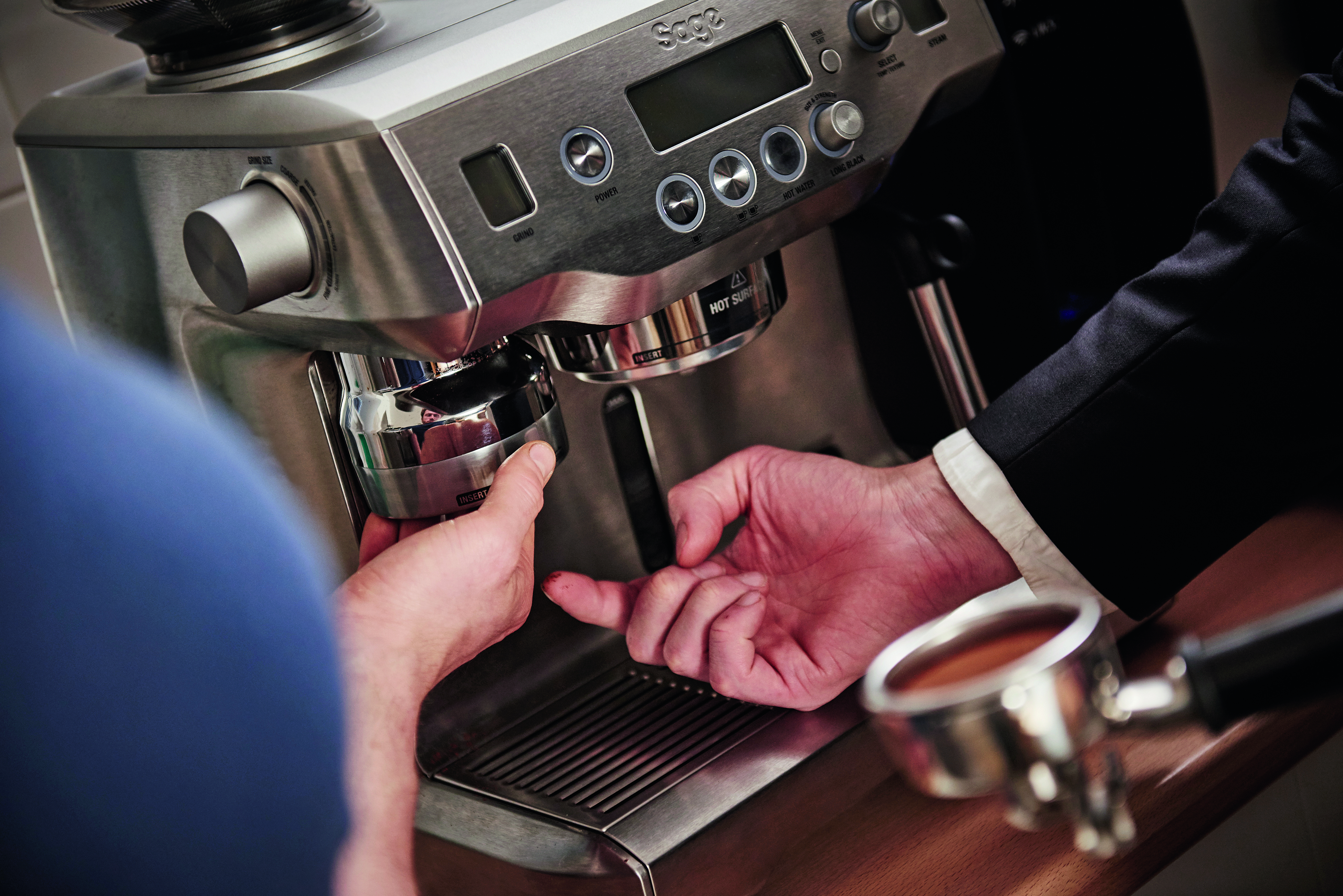Coffee making tips that are actually useful
Get the most out of your espresso machine, courtesy of caffienated expert Jeremy Challender, a man who actually trains baristas

Are you 'into coffee' and want to get more consistently tasty results? Desirous to take your bean grinding skills to level 7, and bore people senseless with talk of 'extraction times' and 'fruity undertones'?
Baristas study for years to master the art of coffee making, but the following tips cover the bare essentials, from where you can start experimenting.

We'd like to thank Jeremy Challender, director of training at Prufrock Coffee and the London Barista Resource, for his help with this. Guy knows his stuff.
- The best espresso and bean to cup machines
- The best milk frothers for, you know, frothing milk
- Advanced studies: the weirdest coffee makers ever
- Cold brew coffee: like coffee, but colder
1. Temperature
The better the machine, the more control and stability you'll have with water temperature. Particularly in hard water areas, it is well worth investing in a coffee maker with a filter built in, or a filter jug.
Says Jeremy: "Our machine, a Simonelli T3 (good name), is meant to stabilise at 0.2 degrees Celsius over 15 shots. It has 14 pounds of brass in each group head to give it serious thermal mass and three temperature controllers per group to help keep the water within point two of a degree of a set-point temperature.
For us this is usually around 93-94 degrees. So the more you spend, the more control you'll have."
Anyway, the takeaway here, is don't use boiling water, use water in the low 90s Centigrade…
Get all the latest news, reviews, deals and buying guides on gorgeous tech, home and active products from the T3 experts
2. Grind
The parameter that most speciality coffee shops use to affect flow is the grind; if you have a courser grind, water will flow faster. The optimum shot time can be found by changing the grind (and subsequently the extraction time).
Jezza says-a: "The optimum espresso is simply the most balanced shot with the best crema, the nicest flavour and the roundest, smoothest body."
Buy yourself a grinder and some scales, and start experimenting.
3. Dose
A traditional Italian single shot is made with seven grams of coffee, although the average dose in a speciality coffee shop these days is more like 18 to 20 grams.
Jeremy adds: "We try to keep our dose within 0.2 of a gram; a really accurate dose has been proven to improve consistency. Also, make sure the coffee is evenly distributed, and tamped firm and flat to prevent 'channeling' or uneven 'washing' of the grinds occurring. The level of pressure the coffee is put under in a commercial machine to achieve this is about 135psi."
4. Extraction time
Time is the parameter you have the easiest, and the most, control over. Even in a pod machine, you have the option to turn the water flow button on and off whenever you want.
In general, with the light roasted, newly cropped coffee we use, our shot time is usually between 28 to 32 seconds to produce a normal 25-35ml shot.
Interestingly, extraction time with the average home pod machine is much quicker – 12 to 15 seconds – because there's so little coffee in the average pod and the grounds aren't as fine as a barista would use.
The lesson: experiment with different extraction times as well as the fineness of grind. With stronger and fresher coffee beans you will probably want a slightly longer extraction time, and vice versa.

For 25 years T3 has been the place to go when you need a gadget. From the incredibly useful, to the flat out beautiful T3 has covered it all. We're here to make your life better by bringing you the latest news, reviewing the products you want to buy and hunting for the best deals. You can follow us on Twitter, Facebook and Instagram. We also have a monthly magazine which you can buy in newsagents or subscribe to online – print and digital versions available.
